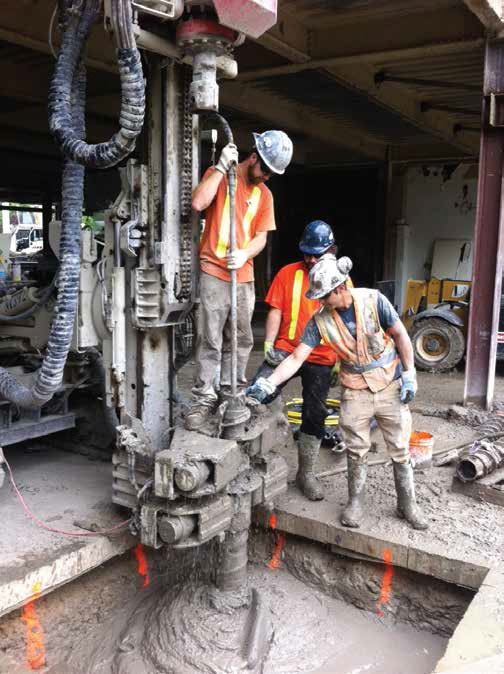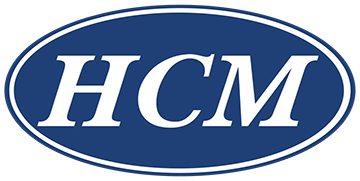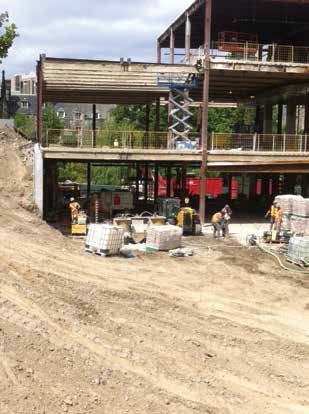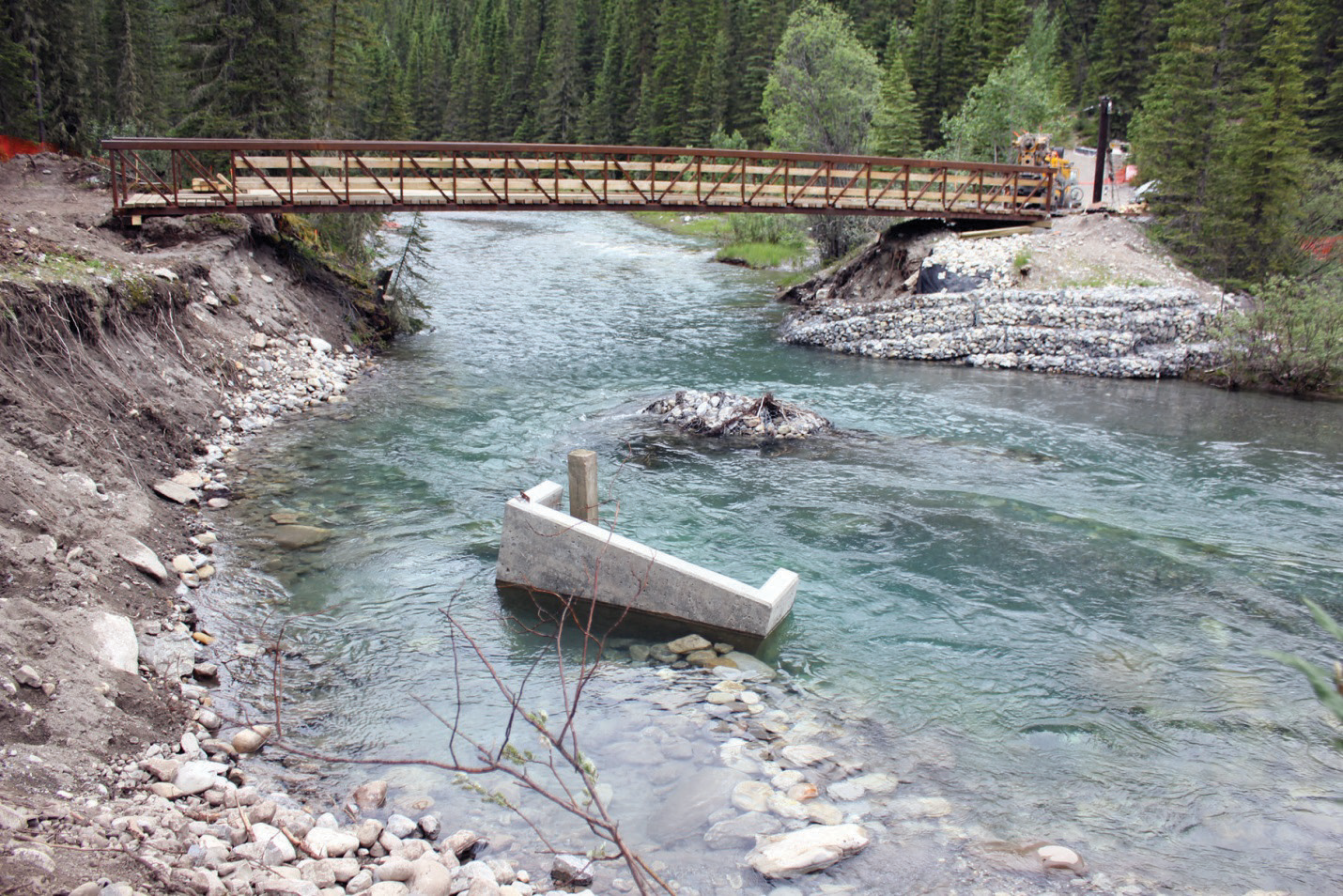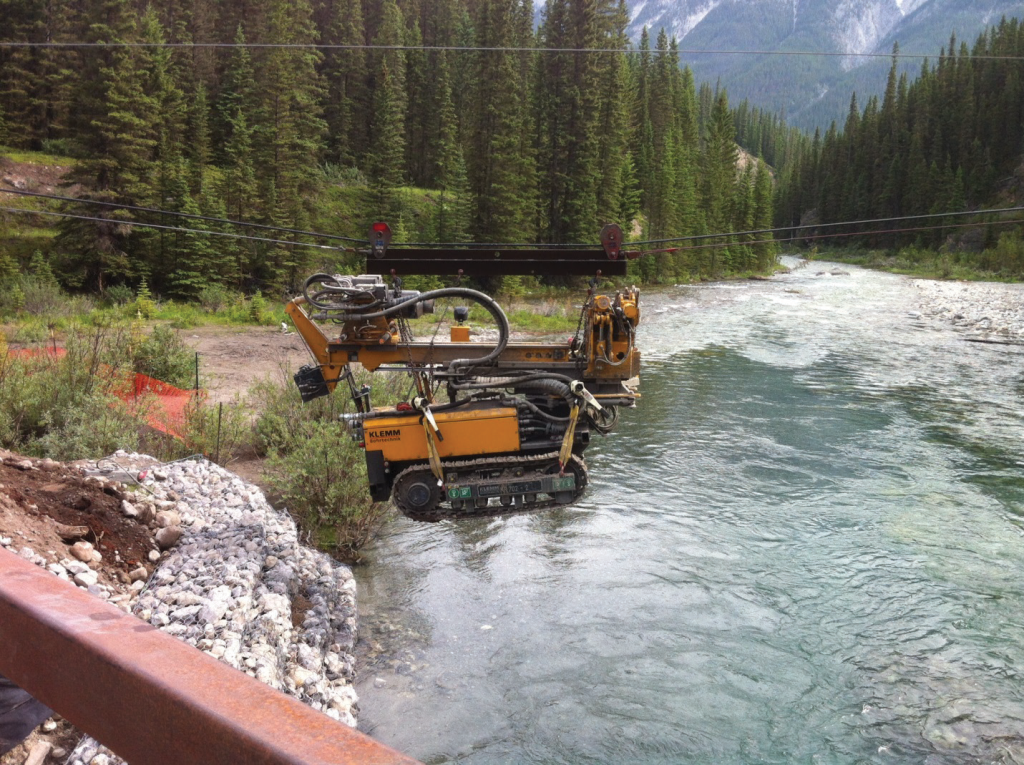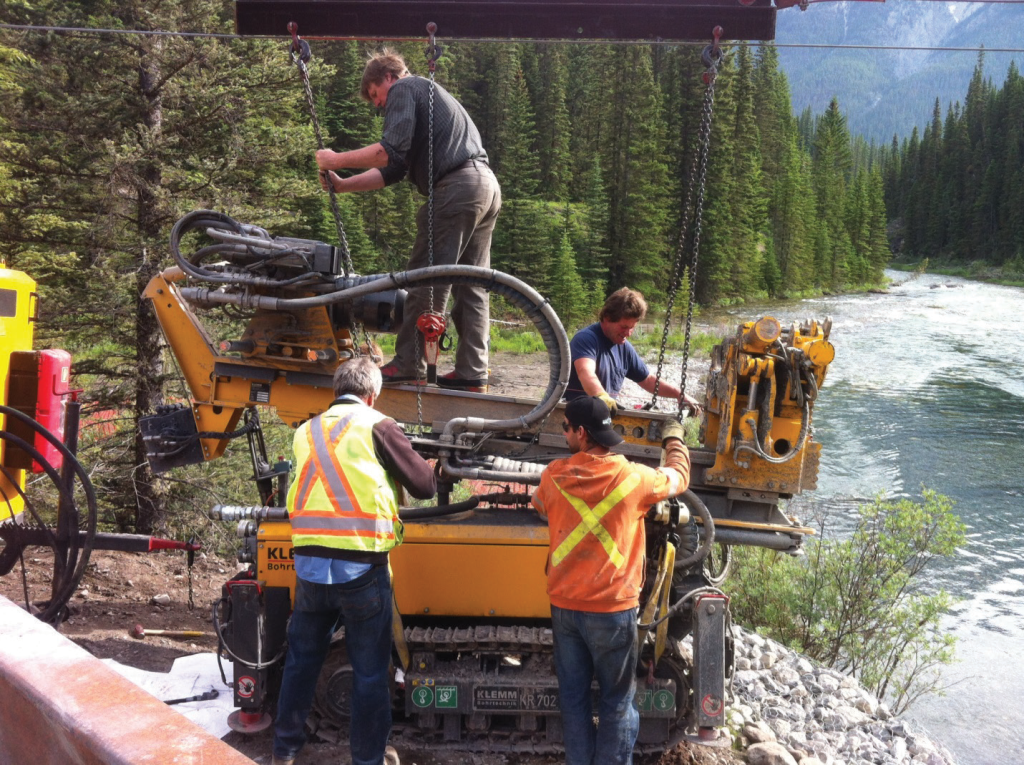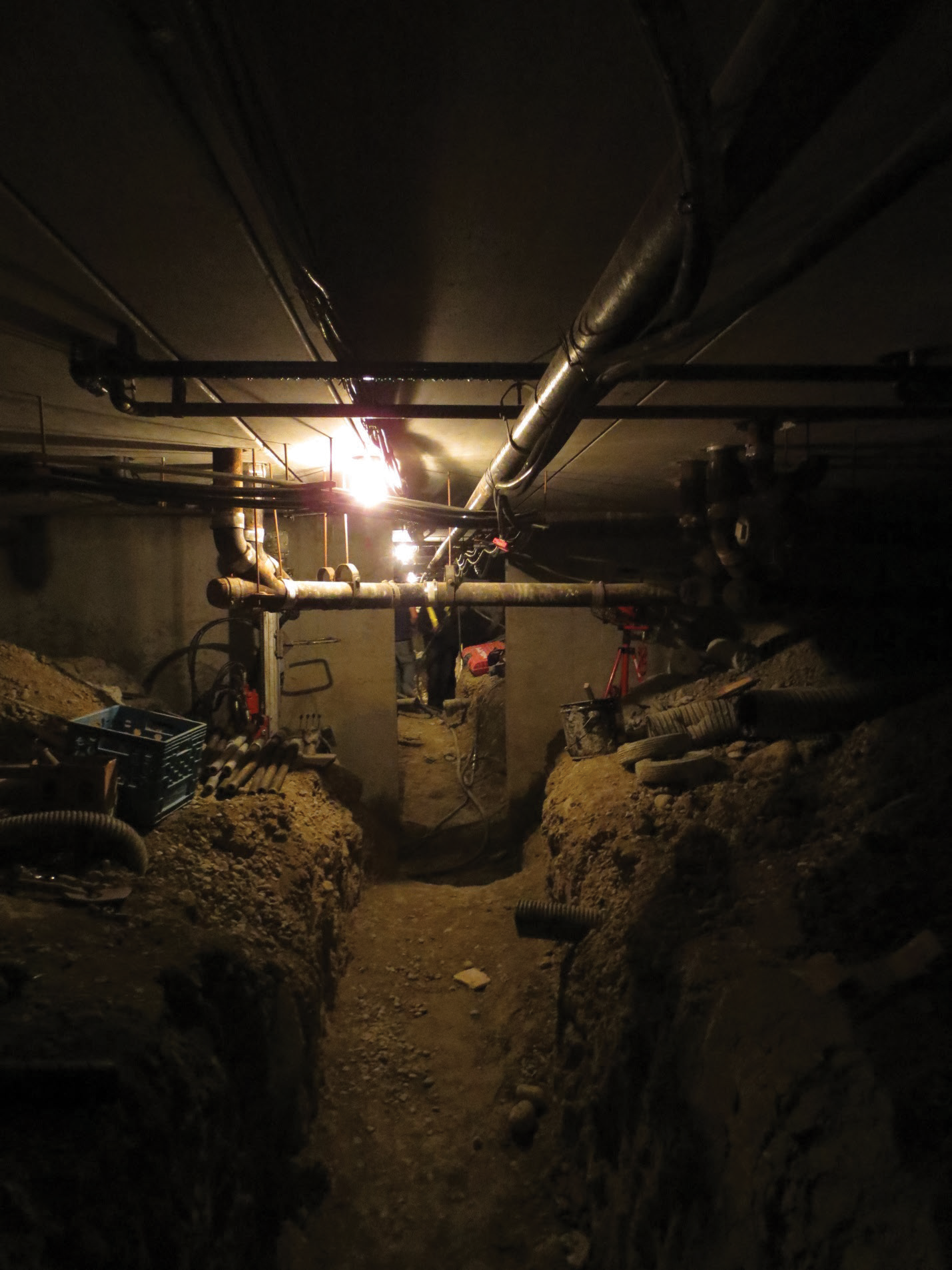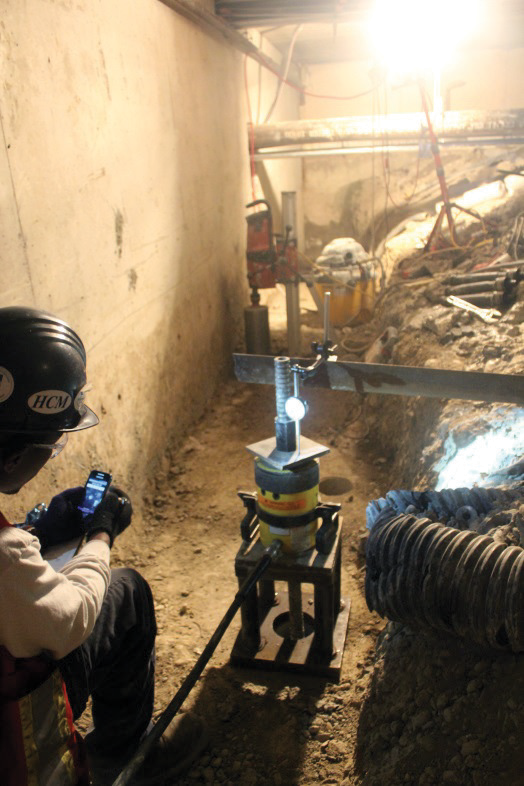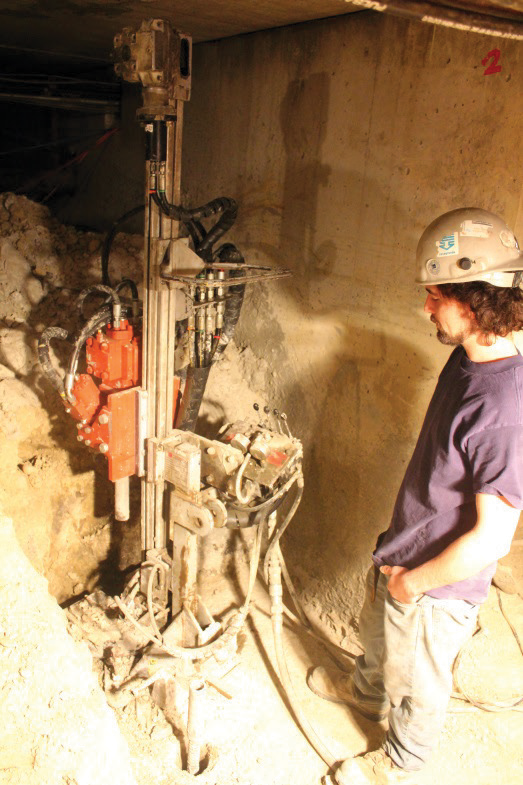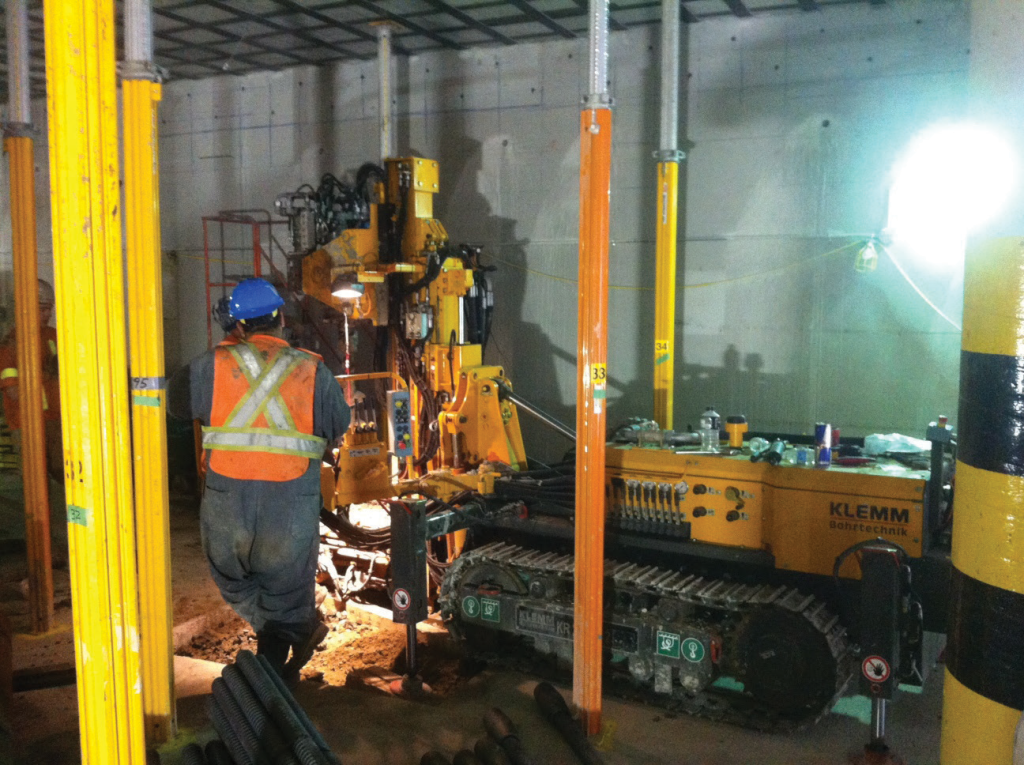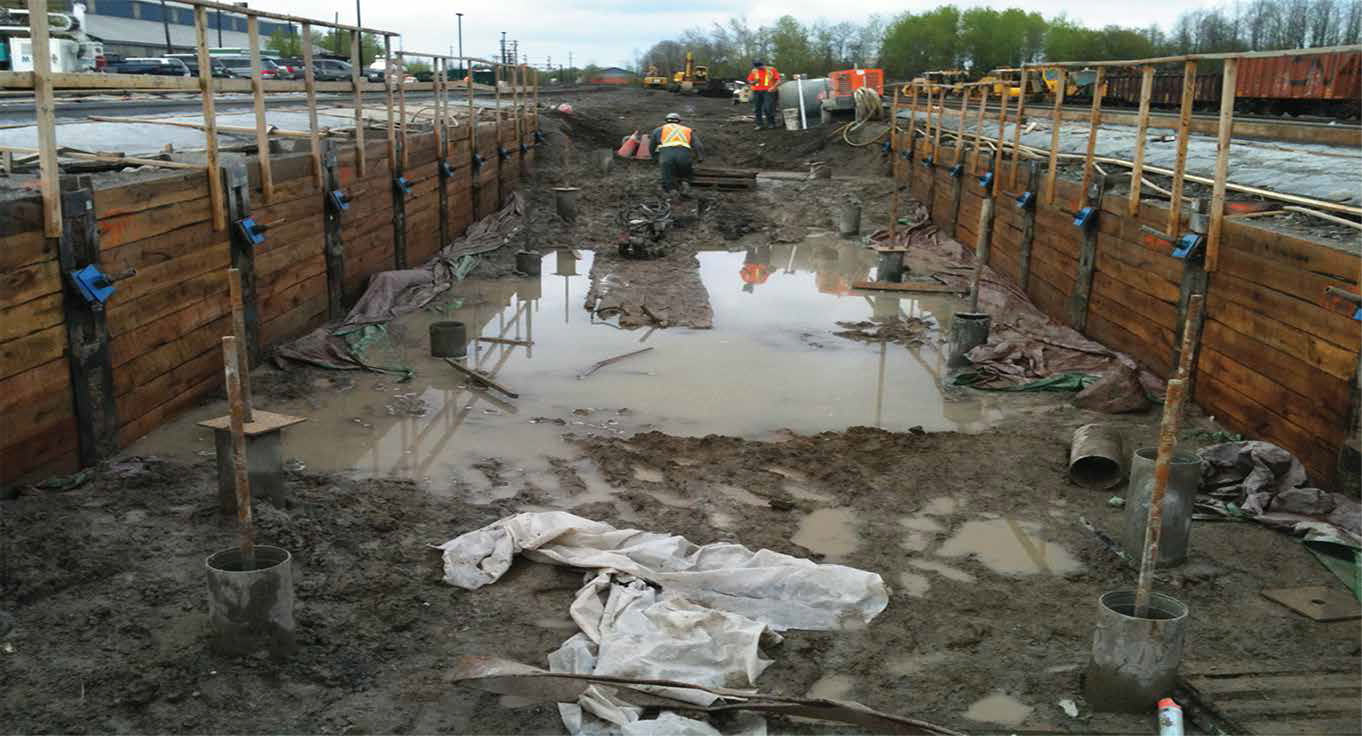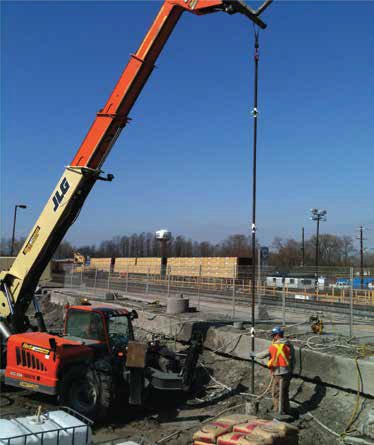TTC Steels Launch Shaft
The expansion of the Faculty of Law building at the University of Toronto incorporated the addition of another storey to the existing building. The increased loading required an upgrade to the capacity of the building foundation. HCM proposed an innovative solution to install micropiles next to the caissons to accommodate the additional loading. The micropile foundation was designed by RWH Engineering Inc. (RWH), an HCM Group company.
Specialty equipment was required to install the micropiles inside the existing building, as there was only four meters of headroom in some areas. HCM used a low head room drill to install micropiles to depths of 18 meters. The micropile design required triple post-grouting to achieve the necessary bond between the grout and the soil. The soil encountered was comprised of layers of sand, silt, and clay. To confirm the design adhesion, a sacrificial load test was performed to 250% of the ULS load.
This project is an example of how HCM/RWH can offer alternative foundation solutions to meet the needs of any project, including projects with challenging site restrictions.
Client: Eastern Construction
Location: Toronto, Ontario
